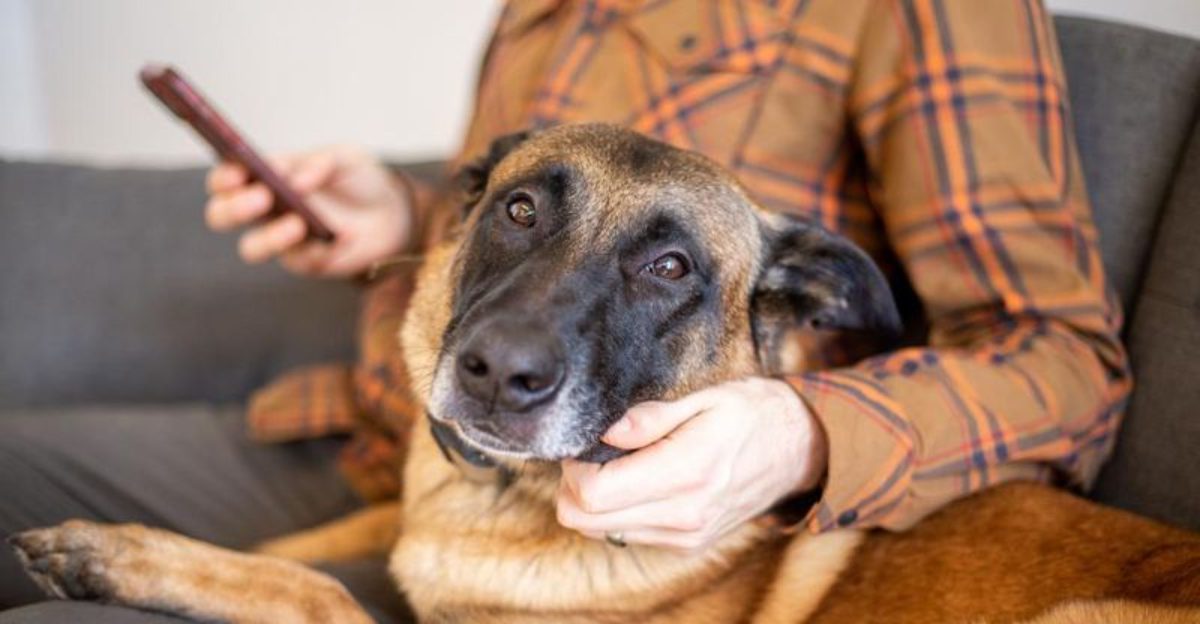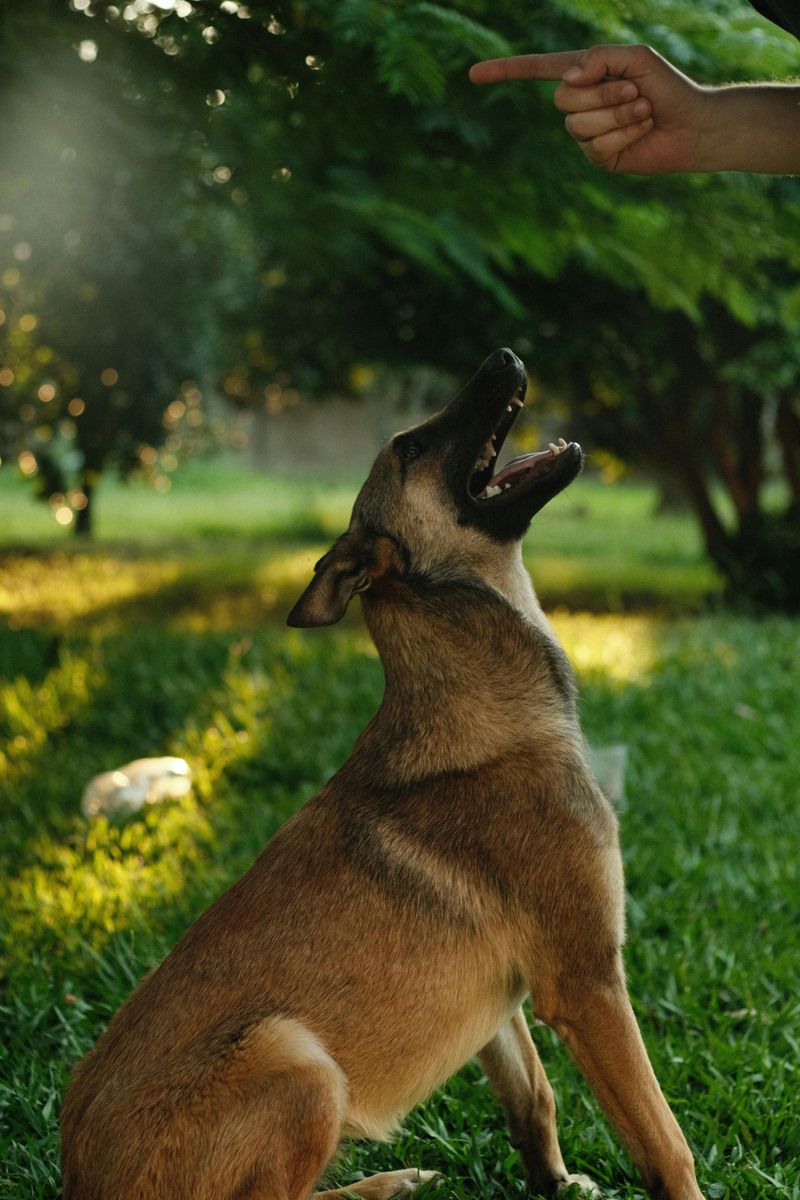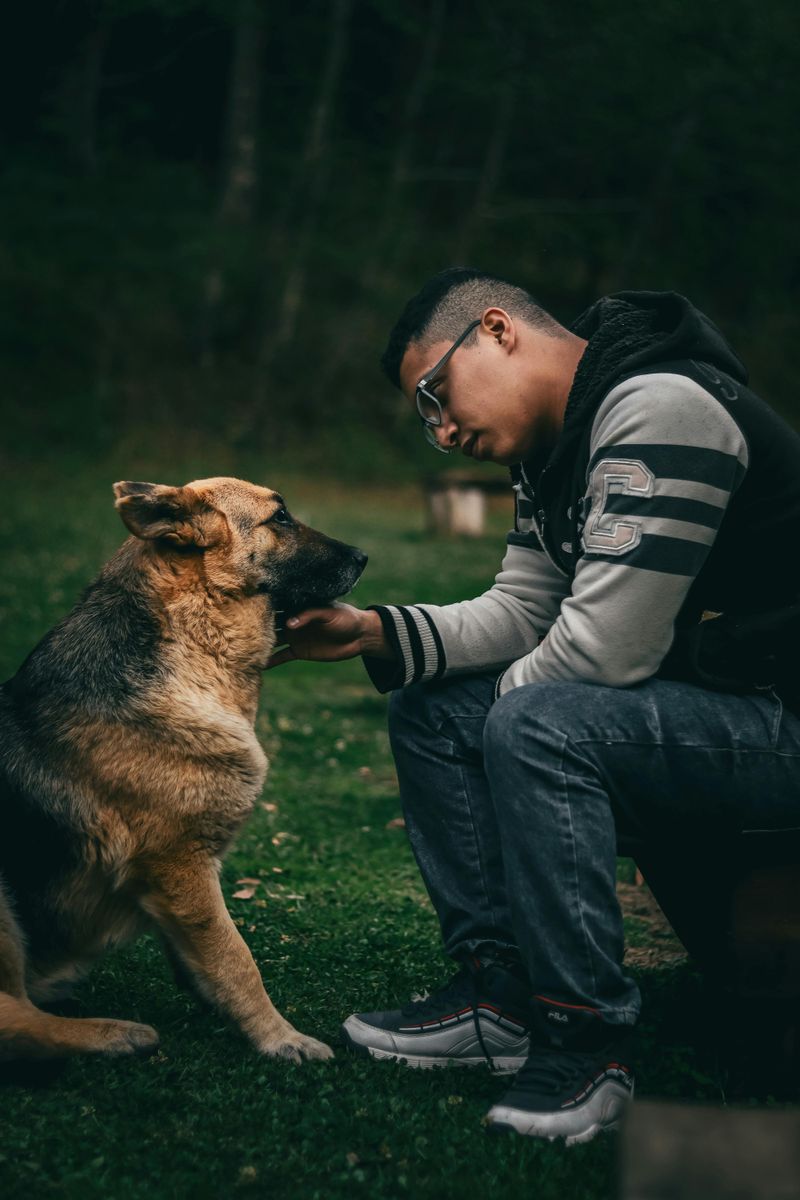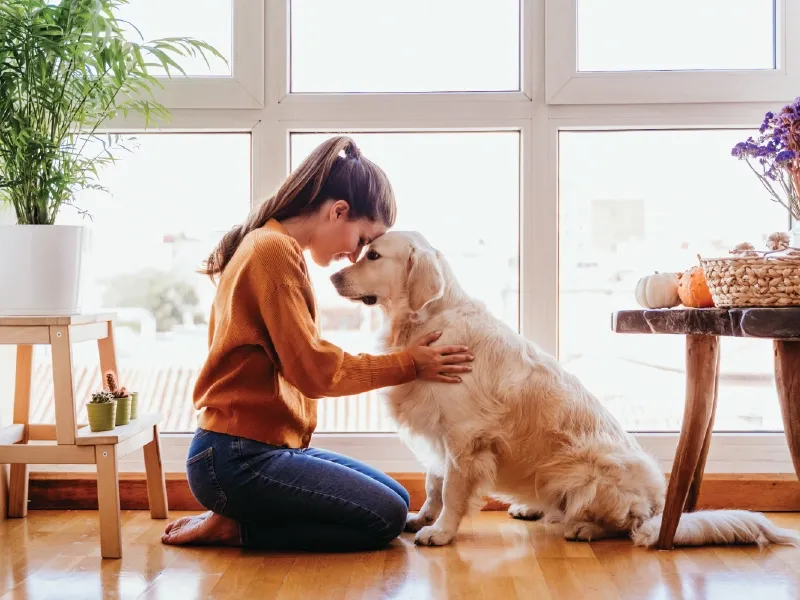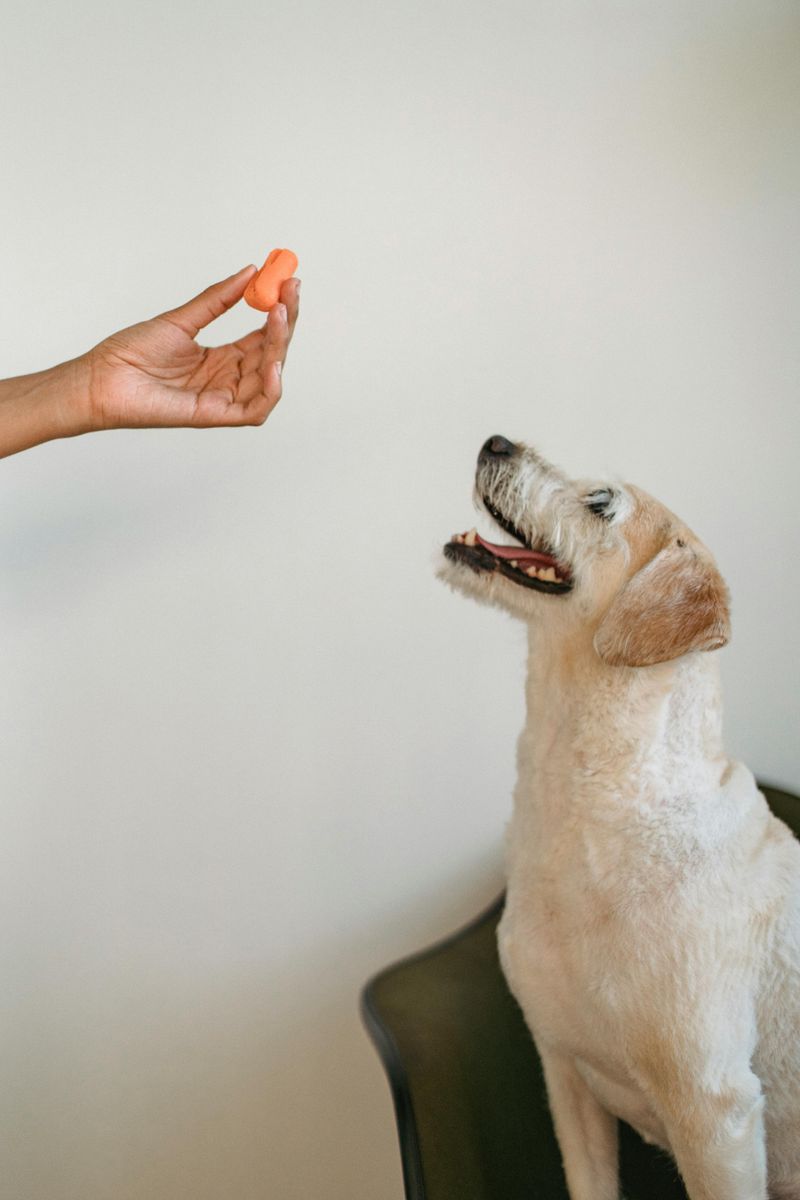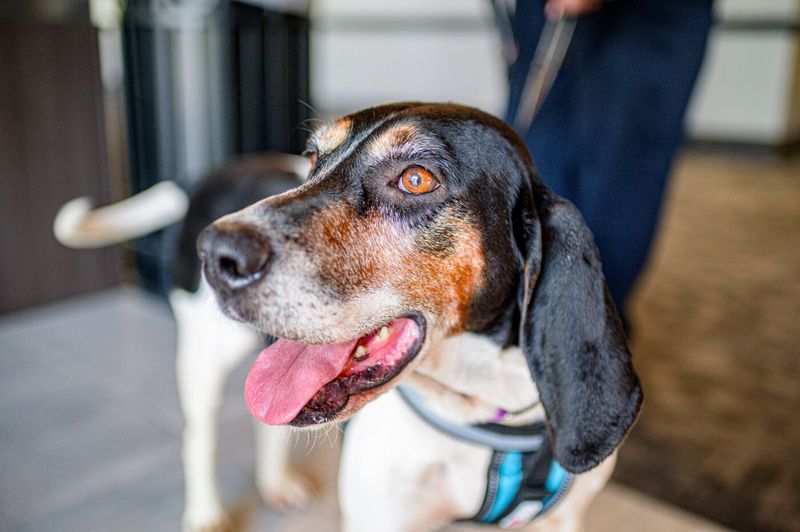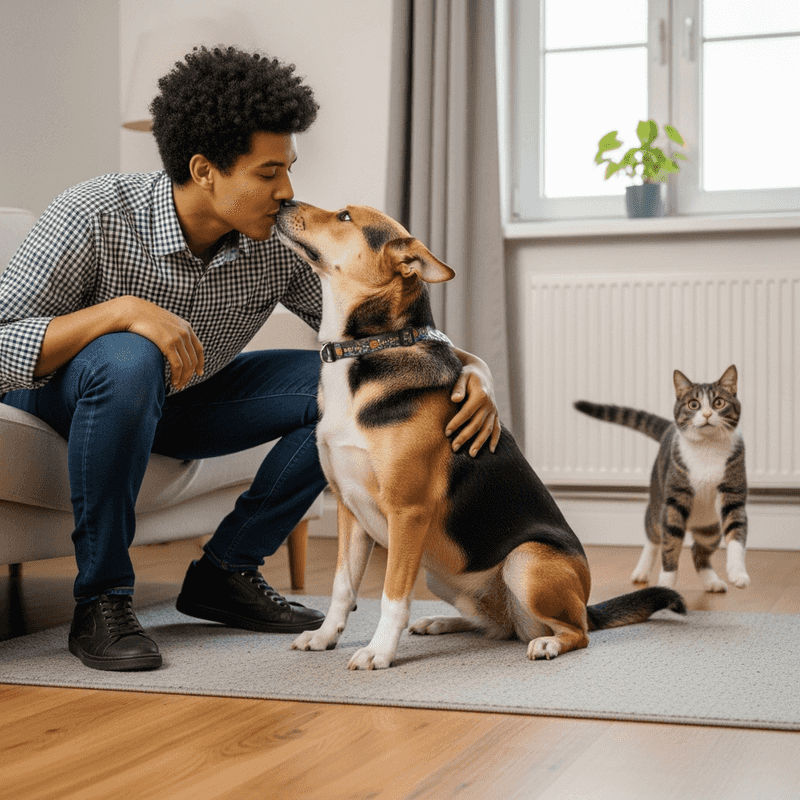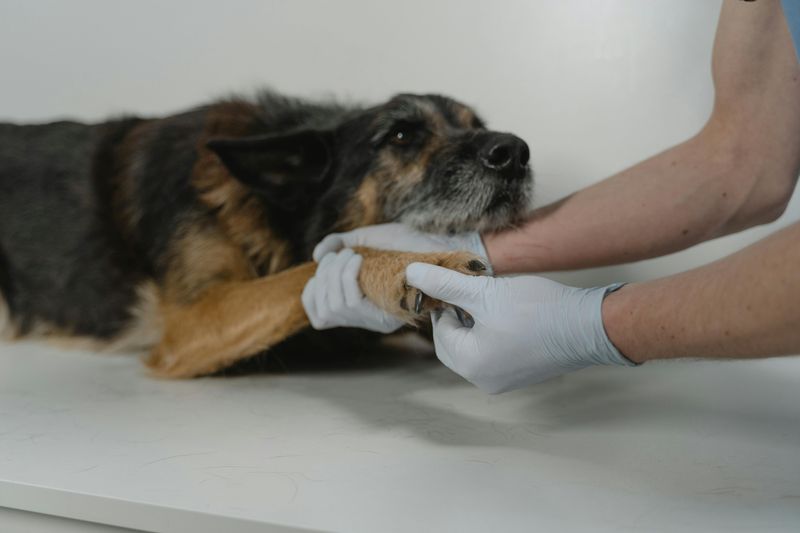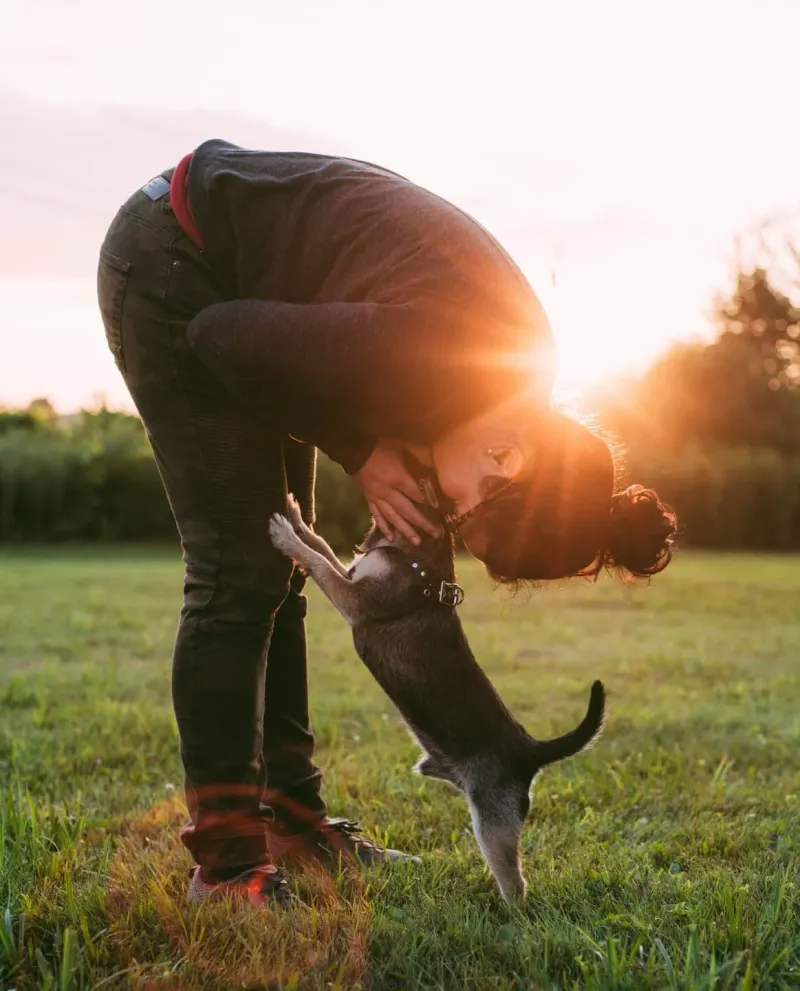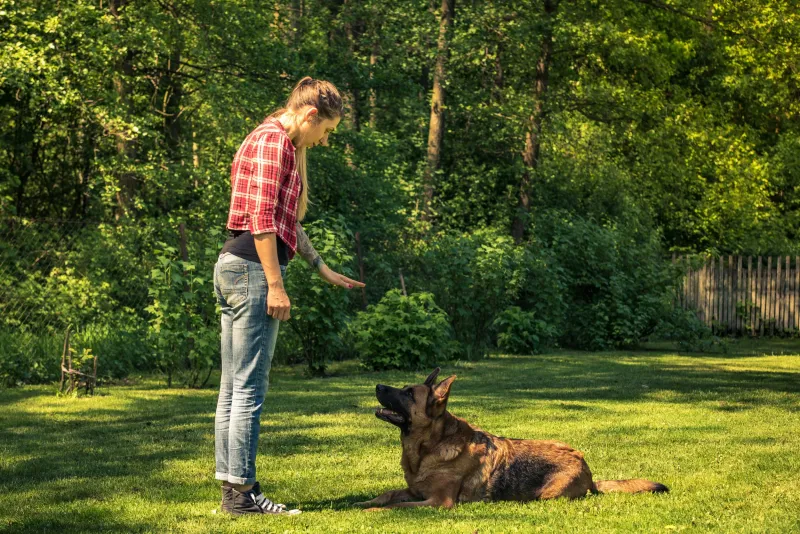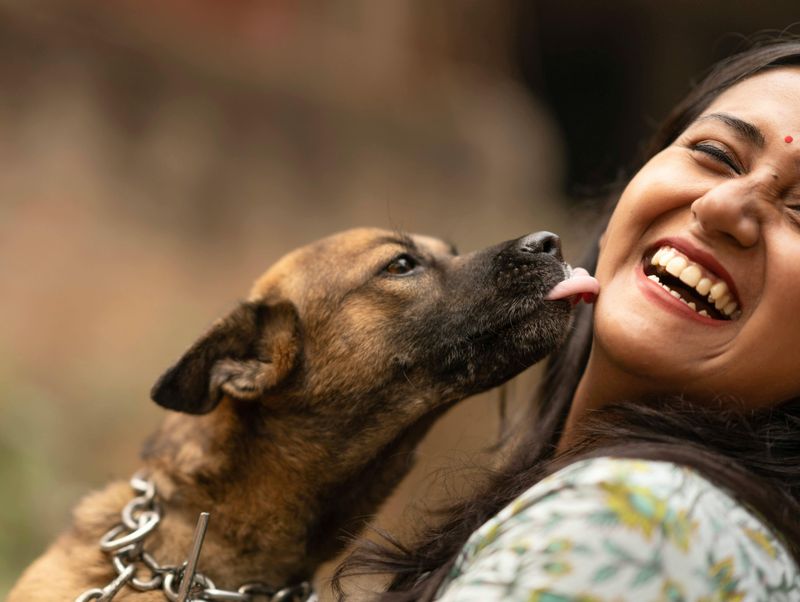Dogs have an incredible ability to connect with human emotions. Their behaviors often reflect a deep understanding of our emotional states, showcasing their empathy and intelligence. Let’s explore 19 specific behaviors that highlight how dogs perceive and respond to human emotions.
Recognizing their owner’s tone of voice (happy, sad, angry)
Dogs possess an exceptional ability to recognize tone of voice. Whether it’s a cheerful greeting or a stern command, they adapt their responses accordingly. This skill helps them gauge their owner’s mood and act in a way that aligns with the emotional context.
When a dog hears a happy tone, you may notice their tail wagging enthusiastically. Conversely, a sad tone may lead them to adopt a more subdued demeanor, indicating their awareness of the shift in emotion.
They are particularly sensitive to angry tones, often responding by lowering their heads or avoiding eye contact. This ability to discern vocal cues strengthens the bond between a dog and its owner.
Maintaining eye contact to read facial expressions
The eyes of a dog can seem to delve deep into your soul. Maintaining eye contact is one way they try to decode human emotions. It’s not just about looking; it’s about understanding what’s behind your eyes.
Dogs use eye contact to read facial expressions, picking up on subtle cues that indicate happiness, sadness, or distress. This behavior is a testament to their empathetic nature and their desire to connect on a deeper level.
Their gaze is not just a means of communication but also a way to strengthen the emotional connection, providing comfort and understanding without uttering a single word.
Following pointing gestures or direction of gaze
When you point towards a toy or a treat, you’ll notice your dog quickly follows your gesture. This behavior shows that dogs can interpret human body language, including pointing and gaze direction.
Their ability to follow pointing gestures signifies their understanding of non-verbal communication. It’s a skill that not only demonstrates intelligence but also their attentive nature.
By observing where their owner looks, dogs gain insights into their intentions and desires, making them excellent companions who are always in sync with human actions.
Reacting differently to their owner’s moods
Dogs are like emotional barometers, sensing the changes in their owner’s mood. Whether you’re feeling blue or on cloud nine, they adapt their behavior to reflect your emotional state.
If you’re happy, they might become more playful, mirroring your enthusiasm with wagging tails and joyful barks. In contrast, during somber times, they often become more subdued, offering quiet companionship.
This sensitive adaptation makes dogs wonderful companions, always ready to provide comfort or share in your joy, depending on what you need the most.
Comforting their owner when they cry or seem upset
Nothing is quite as soothing as a dog’s gentle touch when you’re upset. Many dogs instinctively comfort their owners when they cry, showcasing an empathetic understanding of human distress.
They might approach you quietly, offering a paw or resting their head on your lap, signaling their supportive presence. This behavior demonstrates their ability to sense emotional pain and respond with tenderness.
These comforting gestures highlight the deep emotional connection between dogs and their owners, proving that dogs truly are man’s best friend, offering solace in moments of need.
Bringing a favorite toy to cheer someone up
In times of sadness, some dogs may bring their favorite toy to their owner. This behavior reflects their intuitive sense of empathy and desire to uplift spirits.
By offering something that brings them joy, dogs hope to share happiness and provide comfort. It’s a heartwarming gesture that shows their understanding of human emotions.
This act of kindness demonstrates their willingness to support and cheer up their loved ones, making them not only pets but also compassionate friends who care deeply about their owner’s well-being.
Understanding familiar words like “walk” or “treat”
When you mention ‘walk’ or ‘treat,’ you might see your dog spring to attention. Dogs are capable of associating specific words with actions or rewards, reflecting their cognitive abilities.
This understanding isn’t limited to just these words; many dogs can recognize their names and other common commands or phrases. Their ability to understand language enhances their interaction with humans.
Their excitement upon hearing familiar words showcases their intelligence and eagerness to engage in shared activities, highlighting the dynamic and responsive relationship between dogs and their owners.
Reacting with excitement when they hear their owner’s car or footsteps
The sound of an owner’s car or footsteps can send a dog into a flurry of excitement. This behavior shows their acute sense of hearing and emotional connection.
Even before you walk through the door, dogs recognize these familiar sounds, often waiting eagerly by the door or wagging their tails in anticipation. It’s like they’re welcoming you home before they even see you.
This reaction underscores the deep bond and recognition of their owner, making dogs loyal companions who are always eager to greet their loved ones.
Responding to emotional cues, like sitting closer when someone is sad
Dogs seem to possess an innate ability to read emotional cues. When someone is sad, they might respond by sitting closer, offering silent support.
This behavior reflects their empathic nature, as they intuitively sense when comfort is needed. Their presence is often soothing, providing a sense of companionship and understanding.
Dogs’ ability to respond to subtle emotional cues enhances their role as nurturing companions, always ready to provide comfort when words are insufficient.
Mirroring their owner’s body language
Have you ever noticed your dog mirroring your actions? This behavior occurs when dogs mimic their owner’s body language, reflecting their keen observation skills.
Whether you’re relaxing on the couch or sitting up straight, your dog might adopt a similar posture. This mirroring is not just coincidental; it demonstrates their understanding of and synchronization with your emotional state.
By mirroring your body language, dogs foster a sense of connection and rapport, affirming their attunement to your actions and feelings.
Showing concern when someone in the household is sick
In times of illness, dogs often show a remarkable level of concern. They may become more attentive and nurturing towards the sick individual, staying close and offering gentle companionship.
This behavior illustrates their ability to recognize when something is wrong, responding with care and empathy. Their presence can be comforting, providing both emotional support and companionship.
Dogs’ sensitivity to illness within the household underscores their role as intuitive and caring companions, ready to support and heal with their tender-hearted presence.
Recognizing and responding to praise versus scolding
Dogs are incredibly perceptive when it comes to understanding the difference between praise and scolding. This ability is crucial in training and daily interaction.
When praised, dogs often respond with excitement and joy, affirming their desire to please their owners. On the other hand, scolding may lead them to exhibit submissive behaviors, such as lowering their ears or avoiding eye contact.
This recognition and response to tone reflects their awareness of human emotions, enhancing their capacity to learn and adapt to social cues.
Reading facial expressions and tail signals during interaction
The subtle art of reading facial expressions and tail signals is not lost on dogs. They can interpret human expressions and use their tails to communicate emotions.
Dogs observe facial expressions to understand feelings and intentions. Similarly, their own tail wagging can convey excitement or anxiety, depending on the situation.
This mutual understanding through expressions and gestures fosters a deeper connection, as both humans and dogs communicate in a language beyond words, relying on visual and emotional cues.
Waiting patiently when they sense tension or anger
When the atmosphere is tense or a person is angry, some dogs instinctively wait patiently, sensing the need for space. This behavior showcases their sensitivity to emotional tension.
By staying calm and quiet, they often help diffuse the situation, providing a sense of stability amidst turmoil. Their patience during these times is a testament to their profound understanding.
Dogs’ ability to wait patiently in such scenarios reflects their intuitive empathy, offering silent support and understanding when it is most needed.
Anticipating routines (like bedtime or feeding time)
Dogs quickly pick up on household routines, like feeding or bedtime, displaying an almost uncanny sense of anticipation. This behavior highlights their intelligence and adaptability.
You might find them waiting by their food bowl or nudging you towards the bedroom when it’s time to settle down. Their understanding of routines helps create a structured and harmonious living environment.
This anticipation exemplifies their ability to learn and respond to daily patterns, enhancing the rhythm of life shared with their human companions.
Showing empathy when owners are in distress
Empathy is a defining trait of many dogs, and it becomes most evident when their owners are in distress. They instinctively offer comfort through soft nudges or simply being present.
This empathetic behavior highlights their ability to sense emotional discomfort and respond with compassion. Their non-judgmental presence provides solace and understanding.
Through their empathetic actions, dogs reaffirm their role as devoted companions, always ready to provide emotional support and comfort when needed the most.
Using facial expressions to communicate emotions back
Dogs express a myriad of emotions through their facial expressions. A joyful wag, a curious tilt of the head, or even a playful grin speaks volumes.
By showcasing their emotions through facial expressions, dogs engage in a two-way communication with their owners, sharing feelings of joy, curiosity, or contentment.
This ability to communicate back enhances the bond between humans and dogs, creating a dynamic dialogue based on mutual understanding and expression of emotions.
Recognizing changes in voice pitch and volume
Dogs are remarkably attuned to changes in voice pitch and volume. This sensitivity allows them to respond appropriately to various emotional cues.
Whether it’s a soothing whisper or a loud command, they adjust their behavior to match the tone, showcasing their understanding of vocal nuances.
This ability to recognize and react to vocal changes emphasizes their keen perception, enhancing their interaction with humans and their role as responsive companions.
Staying physically close when their owner feels anxious
In moments of anxiety, dogs often stay close to their owners, offering physical comfort and reassurance. This behavior reflects their nurturing and empathetic nature.
By staying near, they provide a calming presence, helping to alleviate stress and anxiety. Their physical closeness acts as a soothing balm, enhancing emotional well-being.
Dogs’ instinct to offer proximity during anxious times highlights their role as loyal companions, always ready to support and comfort with unwavering dedication.
